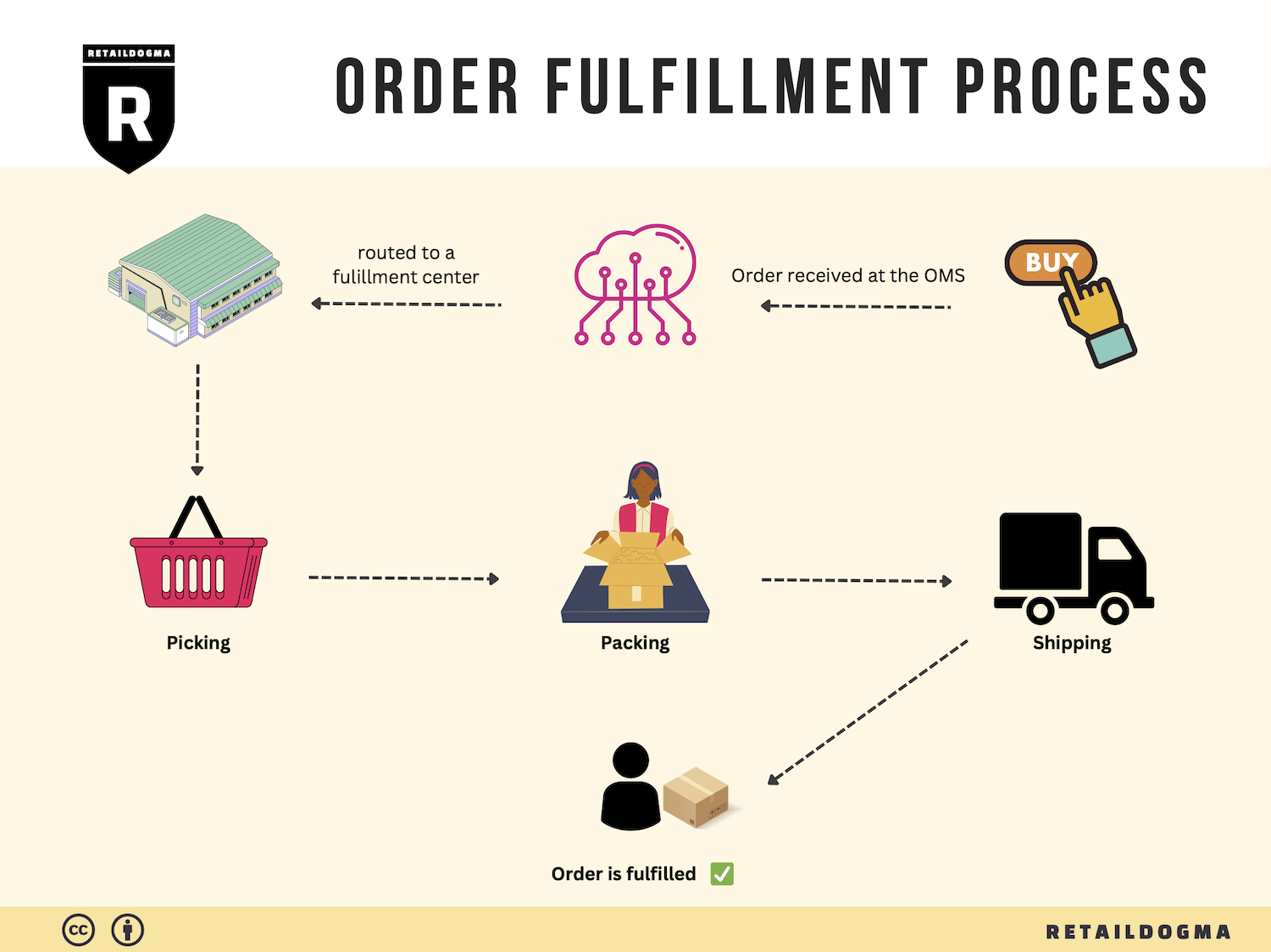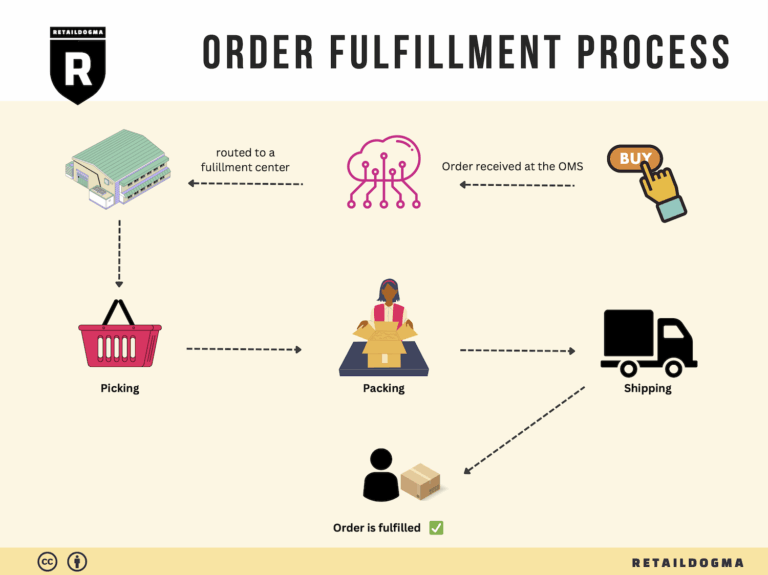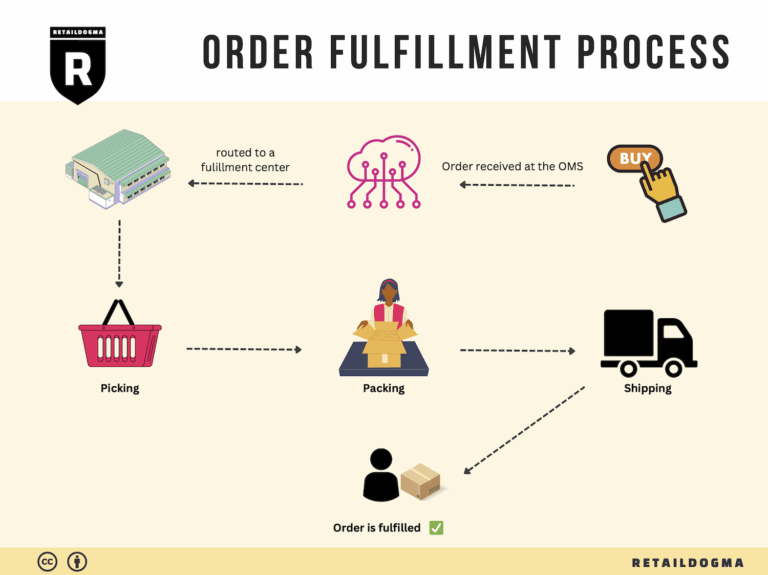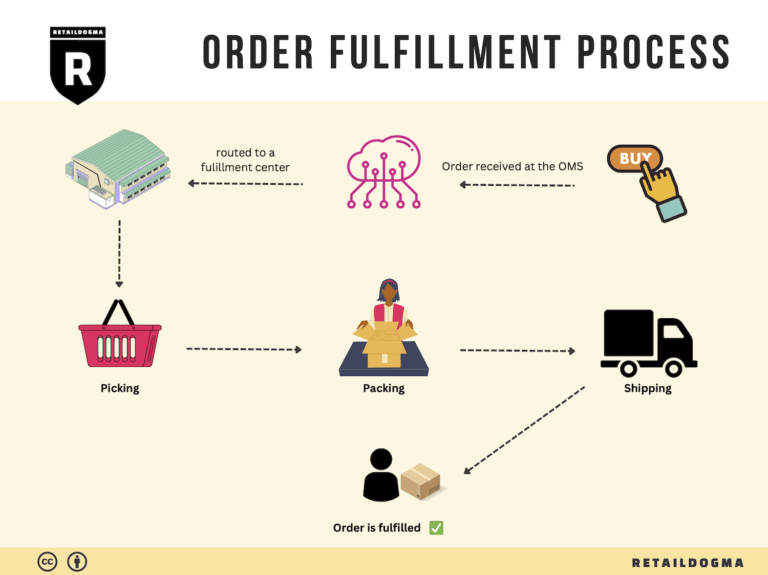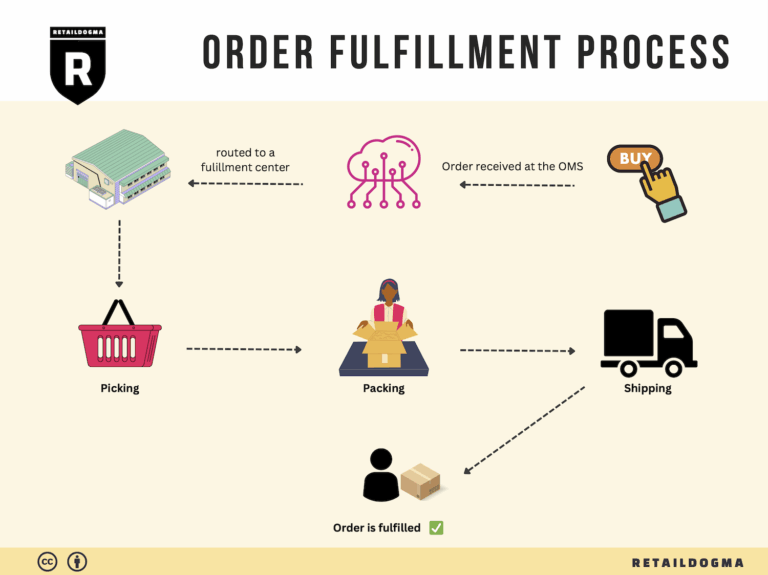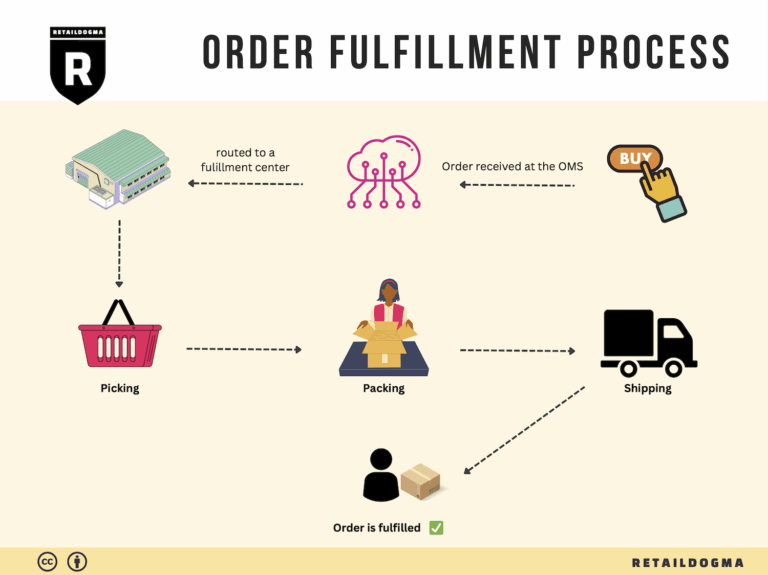What Is A Fulfillment Center? A Complete Guide (2025)
What is E-commerce Fulfillment? An Introduction for Growing Businesses
Understanding E-commerce Fulfillment: A Path to Growth
As an e-commerce business owner, you might find yourself grappling with one of the most common challenges: managing the overwhelming process of packing and shipping orders. The excitement of growing sales often comes with the burden of logistics—ensuring your products reach customers promptly and efficiently. This is where e-commerce fulfillment comes into play.
Simply put, fulfillment is the comprehensive process of getting a product from your warehouse or inventory to your customer’s doorstep. It encompasses everything from inventory management and order processing to packing and shipping. As your business scales, understanding the intricacies of fulfillment becomes crucial to maintaining customer satisfaction and optimizing operational efficiency.
In this guide, we will explore the various fulfillment models available to you, including Third-Party Logistics (3PL) and Fulfillment by Amazon (FBA). Each model has its unique advantages and drawbacks, and selecting the right one can significantly impact your bottom line.
We will also delve into core fulfillment services that can streamline your operations, such as inventory storage, order processing, packing, shipping, and returns management. Understanding these services will help you identify what you need from a fulfillment partner to support your growth.
Choosing the right fulfillment partner is another critical aspect we’ll cover. Factors such as location, technology integration, scalability, and customer service should all play a role in your decision-making process. The right partner can enhance your efficiency, reduce costs, and ultimately improve the customer experience.
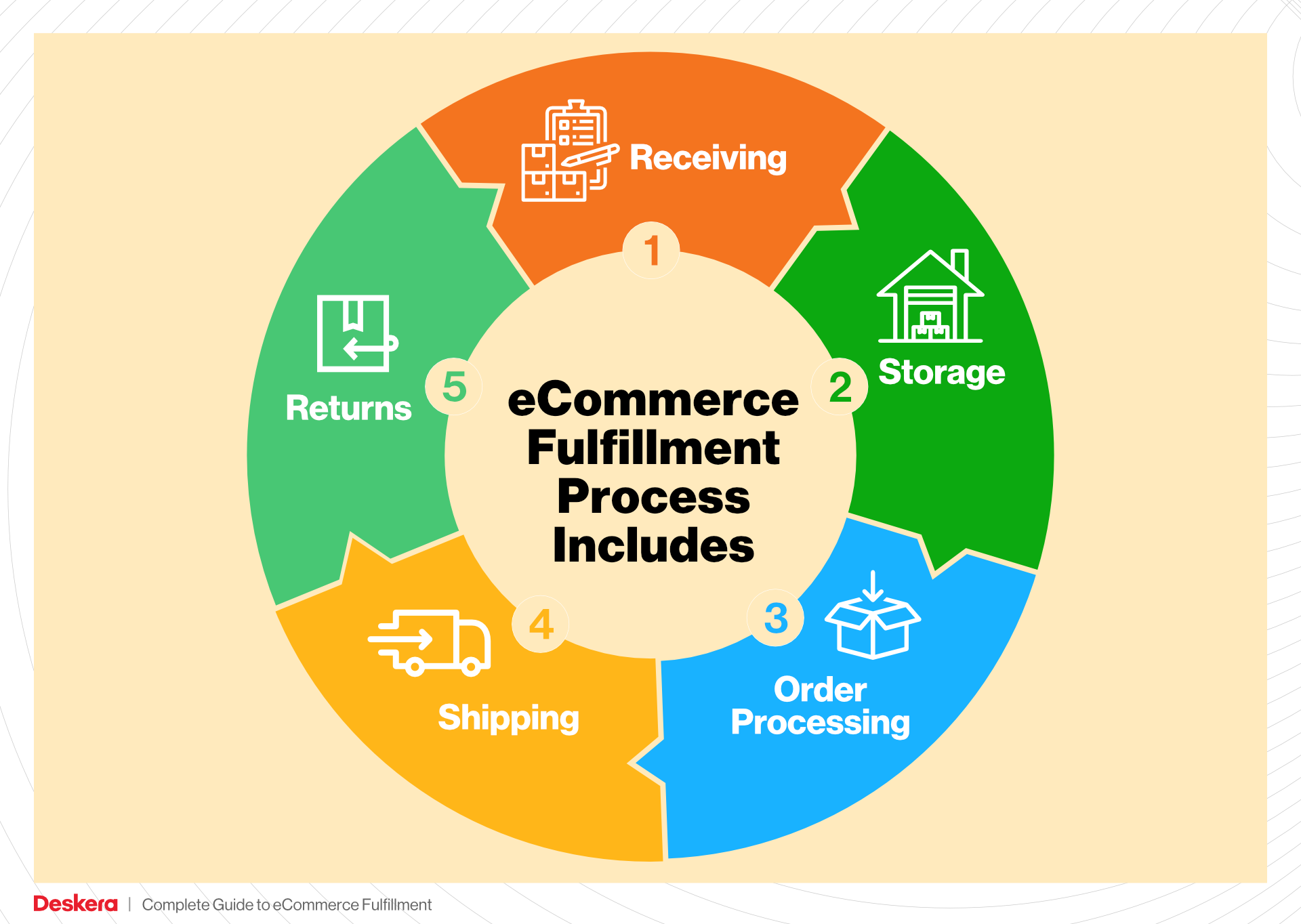
Finally, we’ll discuss pricing structures associated with various fulfillment options. Understanding how costs are calculated can help you budget effectively and avoid unexpected expenses as your order volume increases.
The goal of this guide is to empower you with the knowledge needed to make informed decisions about your logistics strategy. By understanding the ins and outs of e-commerce fulfillment, you can focus on scaling your business while ensuring that your customers receive their orders on time and in excellent condition. With the right approach to fulfillment, your e-commerce venture can thrive in a competitive landscape.
What You’ll Learn In This Guide
- What is E-commerce Fulfillment? An Introduction for Growing Businesses
- The Order Fulfillment Process: From ‘Buy’ Button to Customer’s Door
- Comparing Fulfillment Models: In-House vs. 3PL vs. Dropshipping
- A Deep Dive into Amazon FBA: Pros, Cons, and Who It’s For
- Core Services Offered by Fulfillment Centers
- How to Choose a Fulfillment Partner: A 6-Point Checklist
- Understanding Fulfillment Pricing: A Breakdown of Common Fees
- Frequently Asked Questions (FAQs) about Fulfillment
- Conclusion: Is Outsourcing Fulfillment the Right Move for Your Business?
- Important Disclaimer
The Order Fulfillment Process: From ‘Buy’ Button to Customer’s Door
1. Receiving Inventory
The order fulfillment process begins with the receiving of inventory at the fulfillment center. When products arrive, they undergo a thorough inspection to ensure quality and quantity meet the expected standards. This step typically involves checking against a purchase order to confirm that the right items have been delivered and are in acceptable condition.
Importance: This step is critical because any discrepancies at this stage can lead to stockouts or customer dissatisfaction later in the process. Ensuring accurate inventory records from the start helps maintain operational efficiency.
Key Term: SKU (Stock Keeping Unit) – Each product is assigned a unique SKU, which simplifies tracking and managing inventory throughout the fulfillment process.
2. Warehouse Storage
Once the inventory is received and verified, it is organized for storage. In modern fulfillment centers like the one in Shakopee, items are stored in a random storage system where products are placed into designated storage pods. This method allows for efficient space utilization and faster retrieval times.
Importance: Effective warehouse storage is essential for optimizing the order picking process. By using a random storage system, fulfillment centers can reduce the time it takes to locate and retrieve items, which is crucial during high-demand periods.
Key Term: Pod Storage – This refers to the modular storage units used in fulfillment centers, where products are stored in stacks that can be easily accessed by robots for efficient retrieval.

3. Order Picking
Once a customer places an order, the next step is order picking. This involves retrieving the items from their storage locations based on the details of the order. In sophisticated fulfillment centers, this process is often aided by technology, such as pick lists and automated systems that direct workers or robots to the correct locations.
Importance: The accuracy and speed of order picking directly impact customer satisfaction. A well-organized picking process minimizes errors and ensures that orders are fulfilled promptly, which is vital for maintaining competitive delivery times.
Key Term: Pick List – A document or digital display that outlines the items and their locations needed to fulfill a specific order, guiding the picker through the warehouse efficiently.
4. Order Packing
After items have been picked, they move to the packing station. Here, workers carefully pack the items into boxes, ensuring that they are secure for transit. This step also involves labeling the packages with barcodes that will later be scanned for tracking purposes.
Importance: Proper packing is crucial for preventing damage during shipping and ensuring that the right items reach the customer. This step also enhances the overall customer experience, as neatly packed items reflect professionalism and attention to detail.
Key Term: Packaging Slip – A document included in the package that details the contents of the order, serving both as a receipt for the customer and a checklist for the packer.
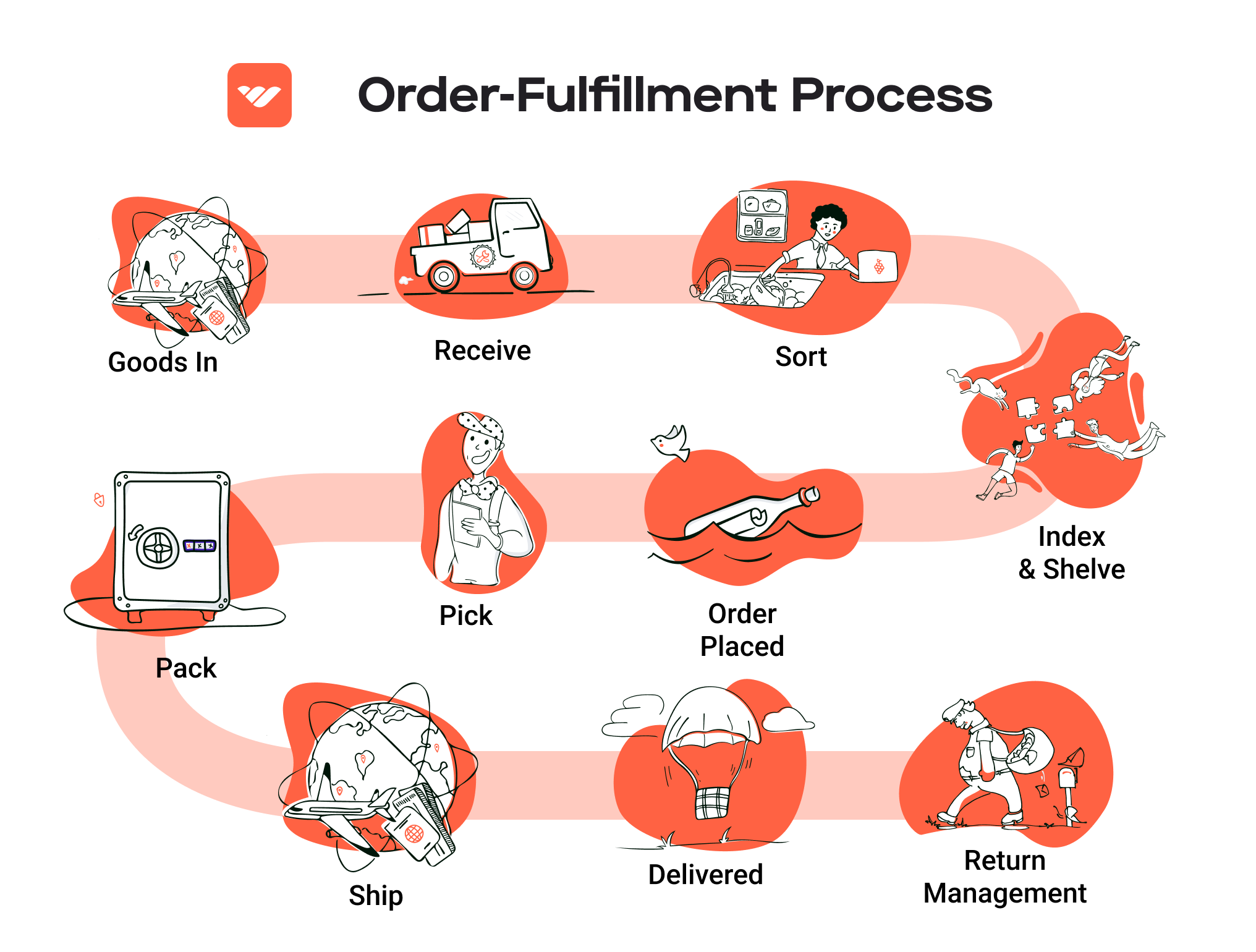
5. Shipping & Delivery
The final step in the order fulfillment process is shipping and delivery. Once packed, the boxes are sent down a conveyor system to be sorted and loaded onto delivery vehicles. Depending on the shipping method selected by the customer, packages may be sent directly to a local delivery service or to a distribution hub for further processing.
Importance: Timely shipping and reliable delivery are paramount in the e-commerce landscape, where customers expect quick turnarounds. This step affects the overall customer satisfaction and the likelihood of repeat business.
Key Term: Last-Mile Delivery – This refers to the final step of the shipping process, where the package is delivered from a distribution center to the customer’s doorstep, often considered the most critical phase of the logistics process.
By understanding and optimizing each step of the order fulfillment process, e-commerce businesses can enhance operational efficiency, reduce costs, and improve customer satisfaction, ultimately leading to sustainable growth.
Comparing Fulfillment Models: In-House vs. 3PL vs. Dropshipping
Fulfillment Model Comparison
| Model | Who Handles Inventory | Best For (Business Stage) | Key Advantage | Key Disadvantage |
|---|---|---|---|---|
| In-House Fulfillment | The business itself | Established businesses | Full control over inventory and processes | Higher operational costs |
| Third-Party Logistics (3PL) | A third-party logistics provider | Growing businesses | Scalability and reduced overhead | Less control over inventory |
| Dropshipping | Supplier/vendor | Startups and small businesses | Low upfront investment | Lower profit margins and longer shipping times |
In-House Fulfillment
In-house fulfillment involves managing the entire inventory process internally, from storage to packing and shipping orders. This model is typically adopted by established businesses that have sufficient resources and a stable order volume. The key advantage of in-house fulfillment is the complete control it offers over inventory management, quality assurance, and customer experience. Businesses can tailor their processes to meet specific needs, implement their own standards for packing, and maintain a direct relationship with their customers. However, this model can lead to higher operational costs due to the need for warehousing, staffing, and logistics management. It also requires significant investment in technology and infrastructure, which may not be feasible for smaller businesses or startups.
Third-Party Logistics (3PL)
Third-party logistics (3PL) providers offer outsourced logistics services, managing inventory, warehousing, and shipping on behalf of businesses. This model is ideal for growing businesses that want to scale without the burden of managing logistics internally. By partnering with a 3PL, businesses can benefit from the provider’s expertise, established infrastructure, and technology. This can significantly reduce overhead costs associated with warehousing and fulfillment, allowing businesses to focus on core operations such as marketing and product development. However, the downside is that businesses have less control over their inventory and fulfillment processes, which can lead to inconsistencies in customer experience. Additionally, relying on a 3PL means that businesses must carefully select a provider whose values and standards align with their own.
Dropshipping
Dropshipping is a fulfillment method where the retailer does not hold inventory but instead transfers customer orders directly to the supplier, who then ships the products to the customer. This model is particularly advantageous for startups and small businesses that may not have the capital to invest in inventory upfront. With dropshipping, businesses can offer a wide range of products without the financial risk of unsold stock. However, this model comes with its own challenges, such as lower profit margins due to the supplier’s costs and longer shipping times, which can impact customer satisfaction. Additionally, businesses have limited control over inventory levels and fulfillment processes, which can lead to stockouts or delays if the supplier does not manage their inventory effectively. Overall, while dropshipping can provide a low-risk entry point into e-commerce, it requires careful management of supplier relationships and customer expectations to ensure a successful operation.
A Deep Dive into Amazon FBA: Pros, Cons, and Who It’s For
Understanding Fulfillment by Amazon (FBA)
Fulfillment by Amazon (FBA) is a service that allows sellers to store their products in Amazon’s extensive fulfillment centers, where Amazon takes care of storage, packaging, shipping, and customer service on behalf of the sellers. This service is particularly appealing for e-commerce business owners looking to scale their operations without the overhead associated with managing logistics themselves.
When a customer orders a product listed on Amazon, the process begins at the fulfillment center. Amazon retrieves the product from its inventory, packages it, and ships it directly to the customer. This service not only streamlines the logistics for sellers but also enhances the shopping experience for customers, as they benefit from Amazon’s fast shipping options, including Prime delivery.
How FBA Works
-
Product Storage: Sellers send their products to Amazon’s fulfillment centers. The Shakopee fulfillment center, for instance, is designed to accommodate a vast range of products and is equipped with advanced robotics to optimize the storage and retrieval processes.
-
Order Processing: When a customer places an order, Amazon’s systems automatically identify the nearest fulfillment center with the item in stock. The item is picked, packed, and shipped by Amazon’s staff, ensuring quick delivery.
-
Customer Service: Amazon manages all customer inquiries and returns for FBA orders. This allows sellers to focus on product development and marketing rather than day-to-day customer service issues.
-
Multi-Channel Fulfillment: Sellers can also use FBA to fulfill orders from other sales channels, such as their own website or other marketplaces, further streamlining their operations.
Pros of Using FBA
1. Prime Eligibility
One of the most significant advantages of FBA is the eligibility for Amazon Prime. Products fulfilled by Amazon automatically qualify for Prime, which can lead to increased visibility and sales, as Prime members often prefer products that are eligible for fast shipping.
2. Customer Trust
Amazon’s reputation for reliability and customer service extends to FBA sellers. Customers are more likely to purchase products from sellers who use FBA due to the assurance of prompt shipping and hassle-free returns, enhancing the seller’s credibility.
3. Multi-Channel Fulfillment
FBA provides the flexibility of fulfilling orders from multiple sales channels, not just Amazon. This means sellers can manage inventory and shipping for their online stores through Amazon’s logistics network, simplifying operations and improving efficiency.
4. Scalability
Using FBA allows businesses to scale rapidly without investing heavily in warehousing and logistics infrastructure. As demand for products increases, sellers can send more inventory to Amazon, leveraging their expansive network.
5. Advanced Logistics
Amazon’s fulfillment centers, like the one in Shakopee, utilize advanced technology and robotics to manage inventory effectively. This results in faster order processing and shipping times, which can significantly enhance customer satisfaction.
Cons of Using FBA
1. High Fees
FBA comes with various fees, including storage fees for keeping inventory in Amazon’s warehouses and fulfillment fees for processing orders. These costs can add up quickly, particularly for sellers with lower-margin products, impacting overall profitability.
2. Strict Inventory Rules
Amazon has strict guidelines regarding inventory management, including restrictions on the types of products that can be stored and how much inventory can be held. Sellers must be diligent in managing their inventory levels to avoid penalties or stockouts.
3. Commingling Risks
FBA uses a commingled inventory system, meaning that products from different sellers are stored together. This can lead to issues if a customer receives a product that is not from the seller they ordered from, potentially harming brand reputation and customer trust.
4. Limited Control
By using FBA, sellers relinquish some control over the fulfillment process, including packaging and shipping methods. This can be a concern for brands that want to maintain a specific image or customer experience.
5. Inventory Management Challenges
Managing inventory across multiple fulfillment centers can be complex. Sellers must track their stock levels closely to prevent excess inventory in one location while running out in another.
Who is FBA Best For?
Fulfillment by Amazon is particularly well-suited for:
-
Small to Medium-Sized Businesses: Companies that may not have the resources or infrastructure to handle logistics can benefit greatly from FBA, allowing them to focus on growth and product development.
-
Sellers with High-Volume Products: Businesses that sell products with high sales velocity can leverage FBA to manage the logistics efficiently and take advantage of Amazon’s distribution network.
-
E-commerce Entrepreneurs: New entrepreneurs looking to enter the market can use FBA as a way to launch their products without the burden of setting up their own fulfillment operations.
-
Brands Seeking Prime Visibility: Sellers wanting to tap into the vast Prime customer base will find that FBA significantly enhances their product visibility and sales potential.
In summary, while FBA offers numerous benefits such as scalability, customer trust, and advanced logistics, it also comes with challenges like high fees and strict inventory rules. Careful consideration of these factors will help e-commerce businesses determine if FBA is the right fit for their growth strategy.
Core Services Offered by Fulfillment Centers
Inventory Management & Warehousing
Fulfillment centers provide robust inventory management and warehousing services that are essential for e-commerce businesses looking to scale. These centers utilize sophisticated inventory tracking systems that allow businesses to monitor stock levels in real-time. This capability is crucial for maintaining optimal inventory levels, reducing the risk of stockouts or overstock situations.
By storing products in a fulfillment center, e-commerce businesses can benefit from economies of scale. They can take advantage of bulk purchasing and storage, which often leads to lower costs per unit. Additionally, fulfillment centers typically offer climate-controlled environments to protect inventory from damage, ensuring that products remain in sellable condition.
The primary benefit of effective inventory management is improved cash flow. E-commerce businesses can allocate resources more efficiently, focusing on marketing and product development rather than the logistics of storage and inventory control. Furthermore, with real-time data at their fingertips, businesses can make informed decisions regarding inventory replenishment and sales forecasting, enhancing overall operational efficiency.
Pick and Pack Services
Pick and pack services are a cornerstone of fulfillment operations. This process involves selecting products from the warehouse based on customer orders and packing them for shipment. Fulfillment centers employ automated systems and skilled staff to ensure that orders are picked accurately and packed securely.
The benefits of using pick and pack services are manifold. First and foremost, it significantly reduces the time it takes to fulfill orders. With streamlined processes and advanced technology, fulfillment centers can process orders quickly, ensuring that customers receive their products in a timely manner. This speed is particularly critical during peak seasons or promotional events, such as Black Friday or Prime Day.
Moreover, outsourcing pick and pack services allows e-commerce businesses to focus on their core competencies. Rather than managing logistics in-house, they can concentrate on marketing, customer service, and product development. This not only enhances productivity but also improves the overall customer experience, as faster shipping times can lead to higher customer satisfaction and repeat business.
Kitting and Assembly
Kitting and assembly services involve grouping individual items into ready-to-ship sets or assembling products before they are sent to customers. This service is particularly beneficial for businesses that offer bundled products or require assembly of multi-part items, such as electronics or furniture.
The primary advantage of kitting and assembly is the increased efficiency it brings to the fulfillment process. By preparing products in advance, fulfillment centers can reduce the time spent during the packing phase, resulting in quicker shipping times. This efficiency can be a significant competitive advantage, especially in the fast-paced e-commerce landscape.
Additionally, kitting allows businesses to offer value-added services that can attract customers. For example, offering bundled products at a discounted rate can increase average order value and enhance customer satisfaction. By utilizing fulfillment centers for these services, e-commerce businesses can reduce labor costs and minimize the complexity of their operations, allowing them to scale more effectively.
Returns Management (Reverse Logistics)
Returns management, or reverse logistics, is a critical service provided by fulfillment centers, particularly in the e-commerce sector where return rates can be high. This service encompasses the entire process of handling returned products, from receiving returns to restocking items or processing them for disposal.
An effective returns management system is vital for maintaining customer satisfaction. A seamless returns process not only enhances the customer experience but also builds trust and loyalty. Fulfillment centers streamline this process by implementing efficient workflows that minimize handling time and costs associated with returns.
The benefits of utilizing fulfillment centers for returns management include improved operational efficiency and reduced costs. By outsourcing this function, e-commerce businesses can avoid the complexities and labor associated with managing returns in-house. Furthermore, fulfillment centers often analyze return data to identify trends, enabling businesses to make informed decisions about product quality and customer preferences, ultimately leading to improved product offerings and reduced return rates.
In summary, leveraging the core services offered by fulfillment centers—inventory management and warehousing, pick and pack services, kitting and assembly, and returns management—can significantly enhance the operational efficiency of e-commerce businesses. These services not only streamline logistics but also allow businesses to focus on growth and customer satisfaction, positioning them for success in an increasingly competitive market.
How to Choose a Fulfillment Partner: A 6-Point Checklist
Location & Warehouse Network
Importance:
The geographical location of your fulfillment partner’s warehouses can significantly impact shipping times, costs, and your overall customer satisfaction. A partner with strategically located warehouses can help you reach your customers faster and at a lower shipping cost, which is crucial in today’s e-commerce landscape.
Questions to Ask:
– Where are your fulfillment centers located, and how do they align with my target customer base?
– What is the average shipping time from your warehouses to major markets?
– Do you have plans to expand your warehouse network in the near future?
Technology & Integrations
Importance:
In a fast-paced e-commerce environment, technology plays a vital role in streamlining operations. A fulfillment partner with robust technology and integration capabilities can help automate order processing, inventory management, and shipping, thus reducing errors and increasing efficiency.
Questions to Ask:
– What warehouse management system (WMS) do you use, and how does it integrate with my e-commerce platform?
– Can your system provide real-time inventory tracking and reporting?
– Do you offer APIs for easy integration with my existing systems?
Specializations (e.g., Cold Storage, Oversized Items)
Importance:
Different businesses have unique needs based on their products. If you sell specialized items such as perishables, hazardous materials, or oversized goods, it’s essential to choose a fulfillment partner with the appropriate capabilities and certifications.
Questions to Ask:
– What types of products do you specialize in fulfilling?
– Do you have the necessary equipment and facilities for handling specialized items (e.g., cold storage for perishables)?
– Are you compliant with industry-specific regulations related to my products?
Scalability & Capacity
Importance:
As your business grows, your fulfillment needs will likely change. Choosing a partner that can scale with you ensures that you won’t face logistical bottlenecks during peak seasons or rapid growth phases. A partner with ample capacity can handle fluctuations in order volume without compromising service quality.
Questions to Ask:
– How do you handle seasonal spikes in order volume?
– What is your current capacity, and how quickly can you scale up if my business grows?
– Are there any limitations to your scaling capabilities?
Pricing and Contracts
Importance:
Understanding the pricing structure and contract terms of your fulfillment partner is crucial for maintaining profitability. Transparent pricing helps you budget effectively and avoid unexpected costs. Additionally, flexible contract terms can accommodate changes in your business strategy.
Questions to Ask:
– Can you provide a detailed breakdown of your pricing model (e.g., storage fees, shipping costs, order fulfillment fees)?
– Are there any hidden fees that I should be aware of?
– What are the terms for contract cancellation or renewal?
Customer Support & Reviews
Importance:
Excellent customer support is essential for resolving issues quickly and maintaining a positive relationship with your fulfillment partner. Additionally, researching reviews and testimonials can provide insights into the partner’s reliability and customer service quality.
Questions to Ask:
– What kind of customer support do you offer (e.g., phone, email, chat), and what are your response times?
– Can you provide references or case studies from similar businesses?
– How do you handle issues related to order fulfillment, and what is your process for resolving them?
Conclusion
Choosing the right fulfillment partner is a critical decision that can influence your e-commerce success. By using this checklist, you can make an informed choice that aligns with your business goals and enhances your operational efficiency. Remember to conduct thorough due diligence and seek partners who not only meet your current needs but can also grow with you in the future.
Understanding Fulfillment Pricing: A Breakdown of Common Fees
Initial Setup Fees
When partnering with a fulfillment center like Amazon’s in Shakopee, the first consideration is often the initial setup fees. These fees typically cover the costs associated with establishing your account and integrating your e-commerce platform with the fulfillment center’s systems.
The setup process may involve configuring your inventory management system, integrating shipping options, and training staff on how to utilize the fulfillment center’s technology. Costs can vary significantly based on the complexity of your operations, ranging from a few hundred to several thousand dollars. Some fulfillment centers may waive these fees for larger clients or offer promotional deals, so it’s essential to inquire about any available discounts.
Receiving Fees
Once your products are ready to be sent to the fulfillment center, you’ll encounter receiving fees. These fees are charged for the labor and resources involved in unloading, inspecting, and storing your products in the warehouse.
Receiving fees are typically calculated on a per-item basis or per pallet, depending on how your goods are shipped. For example, if you send a pallet of 100 items, you might pay a flat fee for receiving the entire pallet or a smaller fee for each individual item. Be sure to ask your fulfillment provider for clarity on their specific receiving fee structure, as it can vary widely.
Storage Fees (per pallet/bin)
Storage fees are recurring costs incurred for keeping your inventory at the fulfillment center. These fees are usually charged monthly and can be calculated based on the volume of space your inventory occupies, typically measured in pallets or bins.
In the case of Amazon’s Shakopee center, storage fees may vary depending on the time of year, with higher rates during peak seasons like the holidays when demand surges. It’s crucial to understand both the base storage rate and any potential surcharges for exceeding your allocated storage limits. Monitoring your inventory turnover can help minimize these costs, as higher turnover rates will reduce the amount of stored inventory and thus lower your storage fees.
Pick & Pack Fees (per item/order)
Pick and pack fees are charged for the labor involved in selecting items from inventory and preparing them for shipment. This process includes picking the items, packing them into boxes, and labeling them for shipment.
Typically, fulfillment centers charge a per-item fee for picking and packing. For instance, if a customer orders three different products, you would be billed for picking and packing each item individually. Some providers may also have a minimum order fee, which means that even if a single item is ordered, you will still incur a base fee. Understanding the structure of these fees is vital, as they can significantly impact your overall fulfillment costs.
Shipping Fees
Shipping fees cover the cost of transporting orders to customers. These fees can vary based on several factors, including the shipping method chosen (standard, expedited, etc.), the destination of the package, and the weight and dimensions of the shipment.
Fulfillment centers like Amazon often negotiate shipping rates with carriers, which can lead to lower costs for sellers. However, it’s important to clarify whether these shipping fees are passed directly to you or included in the overall service fee. Additionally, understanding how shipping fees may fluctuate based on order volume and seasonality can help you budget more effectively.
Tips for Getting an Accurate Quote
-
Detailed Inventory Information: Provide your fulfillment center with detailed information about your inventory, including dimensions, weight, and the total number of SKUs. This will allow them to calculate more accurate receiving, storage, and shipping fees.
-
Understand Your Needs: Clearly outline your business model and expected order volume. This helps the fulfillment center tailor their services to your specific needs, potentially leading to better pricing.
-
Ask About Discounts: Inquire about any discounts or promotions for larger volumes or long-term contracts. Many fulfillment centers are willing to negotiate rates based on anticipated order volumes.
-
Request a Breakdown: When receiving a quote, ask for a detailed breakdown of all fees involved. This transparency will help you identify potential hidden costs and make informed decisions.
-
Review Regularly: As your business grows, periodically review your fulfillment costs and processes to ensure they remain competitive and efficient. Adjusting your strategy can lead to significant savings over time.
By understanding the various fulfillment pricing models and proactively managing your logistics, you can optimize your operations and scale your e-commerce business effectively.
Frequently Asked Questions (FAQs) about Fulfillment
1. What is the Amazon Fulfillment Center in Shakopee, MN?
The Amazon Fulfillment Center in Shakopee, Minnesota, is a state-of-the-art facility that processes and ships customer orders. It is one of the largest fulfillment centers in the region, featuring advanced automation technology, including autonomous robots that help move products efficiently through the warehouse.
2. How does the fulfillment process work at the Shakopee center?
When an order is placed, products are picked from storage pods by robots and delivered to packing stations. There, workers pack the items, apply a barcode label, and send them down a conveyor system for sorting and shipping. This system allows for quick and efficient order fulfillment.
3. What are the operational hours of the Shakopee fulfillment center?
The operational hours may vary, but Amazon fulfillment centers typically run 24/7 to accommodate high order volumes and ensure timely shipping. However, specific visitor hours for tours or public access may differ, so it’s advisable to check in advance.
4. What’s the difference between a warehouse and a fulfillment center?
A warehouse primarily focuses on storing products, while a fulfillment center is designed to process and ship orders directly to customers. Fulfillment centers often include additional services like inventory management, order processing, and shipping logistics, making them integral to e-commerce operations.
5. What is a 3PL (Third-Party Logistics)?
A 3PL provider is a company that offers outsourced logistics services, including warehousing, fulfillment, and transportation. Businesses often partner with 3PLs to streamline their supply chain, reduce overhead costs, and improve delivery times without managing the logistics themselves.
6. How much do fulfillment services cost?
Fulfillment service costs can vary based on several factors, including order volume, storage space required, packaging needs, and additional services like returns management. Typically, fulfillment centers charge fees based on storage, order processing, and shipping, so it’s crucial to evaluate your business needs to get an accurate estimate.
7. How can I store my inventory at the Shakopee fulfillment center?
If you are an Amazon seller using the Fulfillment by Amazon (FBA) program, you can send your inventory to the Shakopee fulfillment center. This may create a sales tax nexus in Minnesota, so be sure to understand your obligations regarding sales tax in the state.
8. What types of products are typically fulfilled from the Shakopee center?
The Shakopee fulfillment center handles a wide range of products, from electronics to household goods. The facility is designed to accommodate a diverse inventory, making it suitable for various e-commerce businesses looking to leverage Amazon’s logistics network.
9. Are there any safety concerns associated with working in the Shakopee fulfillment center?
Like many large warehouses, the Shakopee fulfillment center has faced scrutiny regarding working conditions. Amazon has implemented safety protocols and technologies to improve the work environment, but it’s essential for potential employees and partners to be aware of industry-wide concerns and standards.
10. Can I tour the Shakopee fulfillment center, and how do I sign up?
Yes, the Shakopee fulfillment center offers public tours. These tours provide insight into the operations and technology used within the facility. To sign up, visit Amazon’s official tour website, where you can choose a date and time that suits you. Keep in mind that tour group sizes may be limited during peak times.
Conclusion: Is Outsourcing Fulfillment the Right Move for Your Business?
The Case for Outsourcing Fulfillment
Outsourcing your fulfillment operations can be a transformative decision for your e-commerce business, offering a multitude of benefits that can propel your growth. One of the most significant advantages is time savings. By delegating the logistics of storage, packing, and shipping to a specialized partner, you free up valuable hours that can be redirected towards strategic initiatives like marketing, product development, and customer engagement. This shift allows you to focus on scaling your business rather than getting bogged down in operational details.
Scalability is another critical benefit. As your sales volume fluctuates—especially during peak seasons or promotional events—an experienced fulfillment partner can easily adjust to your needs. This flexibility means you won’t have to invest in additional warehouse space or hire temporary staff, which can be costly and inefficient. Instead, your fulfillment partner can leverage their resources and technology, such as those seen at Amazon’s Shakopee facility, to ensure that your orders are processed quickly and accurately.
Moreover, fulfillment centers bring a wealth of expertise in logistics that can be hard to replicate in-house. They often employ advanced technology and best practices that enhance efficiency and reduce errors, helping to improve your overall customer satisfaction. This level of professionalism can give you a competitive edge in the crowded e-commerce landscape.
However, the choice of a fulfillment partner is critical. Not all services are created equal, and it’s essential to find one that aligns with your business goals and values. Conduct a thorough audit of your current shipping processes and assess whether a fulfillment partner could enhance your operational efficiency and customer experience.
Now is the time to evaluate whether outsourcing fulfillment could be the next strategic step in your growth journey. Take action today and set your business on a path to greater efficiency and scalability.
Important Disclaimer
⚠️ Important Disclaimer
The information in this guide is for educational purposes. Fulfillment services, pricing, and platform features change frequently. Always conduct your own due diligence and consult with providers directly before making business decisions.
